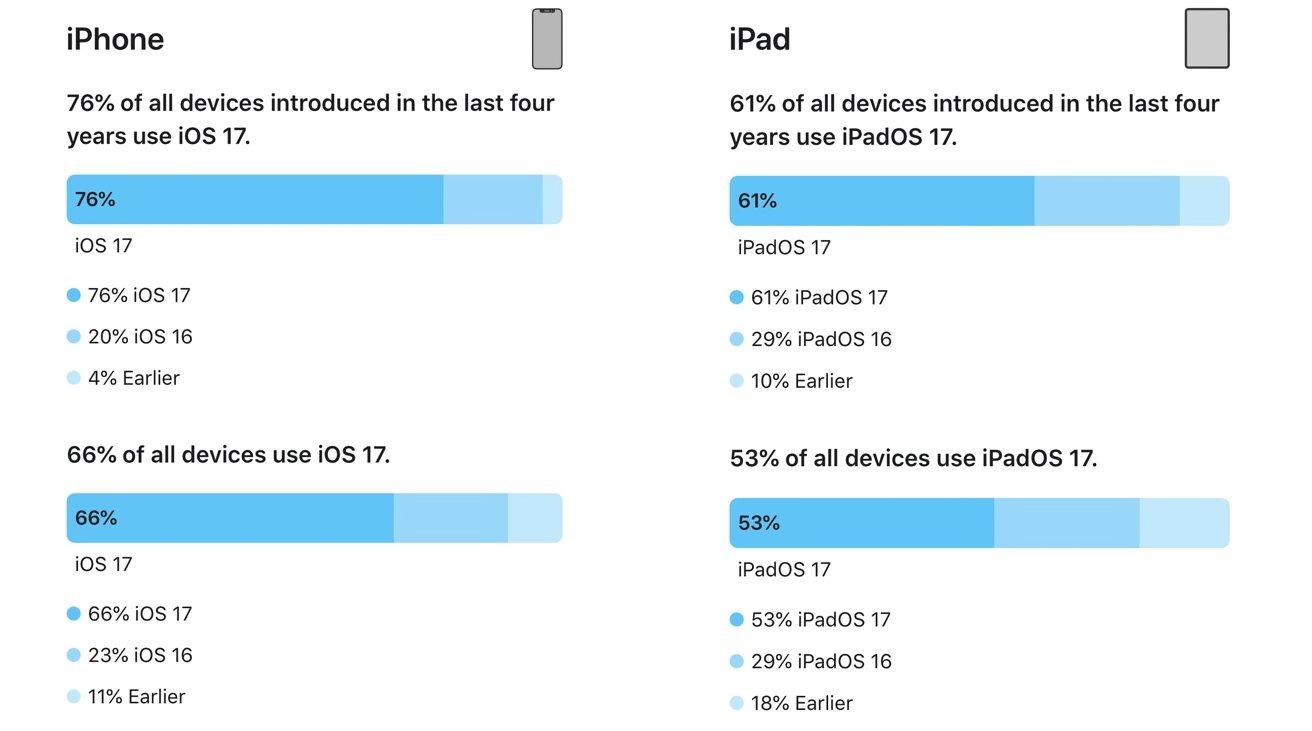At the dawn ofmajor update of iOS to version 17.4, it is time to take stock of the adoption of iOS 17. The firmware was presented last June, then deployed on September 18, 2023, shortly after the Keynote announcement of the iPhone 15 by Cupertino.
We were already relayinga report one month after its releaseregarding the adoption of iOS 17. The analysis came fromMixpanel, which deduced that only 23% of iPhones were updated to iOS 17 as of October 8, 2023. Today we benefit from new figures provided by Apple on this subject, andthey indicate worse results than iOS 16.
5% drop compared to iOS 16
According to the new figures, which this time are reported by Apple,only 6 in 10 iPhones (66%) are equipped with iOS 17 or higher. If we only count theiPhones introduced in the last four years, this figure rises to more than 7 in 10, or 76% to be more precise. On iPad, adoption is even lower with 53% of tablets running iPadOS 17, and 61% when only taking into account iPads released after 2020. If the iPad is experiencing an increase in adoption of the latest update Today, the iPhone is experiencing a significant decline.

© Apple
Why this decline?
This decline could be attributed to various factors. In particular the fear that many users have of encountering problems with the new version. Furthermore, before its release, many rumors were relayed on the web,announcing iOS 17 without “big news”, which could have caused reluctance to install it.
Furthermore, there is also another factor to take into account. This is the fact that following an update, no matter which one, the operating system ofthe device must take its bearings and optimize itself. Thisphase d’adaptationdureabout a week. So while the OS is optimizing, it is very likely that the device will experience aloss of performancetranslating toless autonomy, or less fluidity. People who don't know this will therefore associate upgrading with the loss of their phones' capabilities, and then avoid updates.

i-nfo.fr - Official iPhon.fr app
By : Keleops AG






